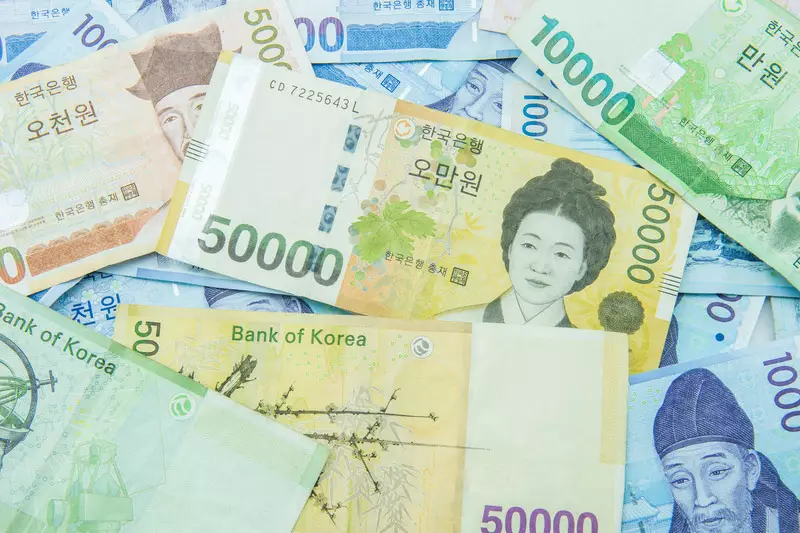On Monday, most Asian currencies experienced a downward drift, with the South Korean won notably taking the lead in losses. This occurs against a backdrop of heightened political instability in South Korea and escalating geopolitical tensions in the Middle East, particularly following the recent upheaval in Syria. As markets brace for a key U.S. inflation report later this week, the atmosphere has become increasingly cautious, underscoring investors’ growing aversion to riskier assets.
The complex dynamics of global financial markets are often influenced by political crises, and the current situation in South Korea exemplifies this relationship. The South Korean won’s exchange rate against the U.S. dollar, represented by the USD/KRW pair, surged almost 1% on Monday to approach a two-year peak. Notably, the won has depreciated more than 2% against the dollar in just one week and has fallen nearly 10% since the start of 2024. Such a dramatic decline places the won at the bottom of the performance ranking for currencies in the region and signals serious concerns regarding the economic outlook for South Korea.
The core of the South Korean crisis emanates from escalating scrutiny surrounding President Yoon Suk Yeol, who is currently facing a criminal investigation initiated by prosecutors. This scrutiny follows his contentious attempt to impose martial law last week, a move that faced significant backlash. Following an impeachment vote in the opposition-controlled parliament that Yoon managed to survive, internal fractures within his own party have emerged, casting doubt on his political future. Reports suggest that Yoon may soon be sidelined, adding to concerns regarding the stability necessary for economic growth.
This political uncertainty has a notable impact on investor behavior and economic stability in South Korea, which serves as a linchpin in the East Asian economic landscape. Many Asian currencies, already struggling due to a strengthening U.S. dollar and fears of growing economic friction between the U.S. and China, are now subject to additional strains created by South Korea’s political tumult.
In the broader context, various Asian currencies displayed mixed performance on Monday. The Taiwan dollar showed a minor increase of 0.3% against the U.S. dollar, whereas the Singapore dollar inched up by 0.1%. The Australian dollar experienced little movement ahead of an expected decision from the Reserve Bank regarding interest rates on Tuesday. Analysts predict that the rate will remain unchanged, though there are signs of faltering economic conditions that could affect future hawkish stances.
On the Indian subcontinent, the rupee edged up by 0.1% against the dollar. This uptick can be attributed to the Reserve Bank of India’s recent decision to lower a key bank reserve ratio, aimed at injecting liquidity into an economy showing signs of cooling. Meanwhile, the Japanese yen remained stable amid anticipation of the Bank of Japan’s upcoming policy decisions, as recent GDP data revealed growth slightly above expectations, yet below prior estimates.
China’s yuan recorded a modest rise against the dollar following disappointing data regarding consumer and producer price inflation. Declining figures in these areas, despite prior stimulus measures, amplify concerns about the efficacy of recent economic interventions. The upcoming Central Economic Work Conference in China is generating speculations regarding potential further stimulus measures intended to revive the economy.
As the week progresses, market participants are increasingly focused on the upcoming U.S. consumer price index release set for Wednesday. This data may provide vital clues about the Federal Reserve’s interest rate policy trajectory. Current market sentiment anticipates a 25 basis point cut by the Fed, even as recent job growth figures exceeded forecasts.
Amid these complex interactions of regional and global economic factors, the resilience and stability of Asian currencies will likely remain under scrutiny. The intertwining of local political pressures, ongoing geopolitical issues, and broader economic indicators continues to shape the financial landscape. Understanding these developments is crucial for investors seeking to navigate this volatile market environment.

